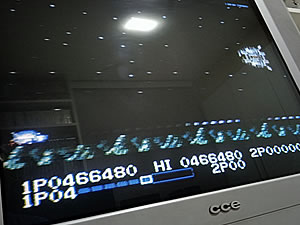Checkpoints OFF
1 Difficulty level
6 Stages (loopable)
Ship speed by icons
- - - - - - -
Developed by Konami
Published by Konami in 1988
The remarkable success of Gradius in the 80s was a magical moment for Konami and shmup fans. Ported to a multitude of systems back in the day, the game also paved the way for a few spin-offs, of which the most famous for a while was Life Force, which in turn is the westernized name of the original Japanese Salamander. If you’re often confused by both names, suffice it to say that confusion is a common companion for this shmup duo, a fact that was duly cascaded from the arcade realm down to the Famicom/NES.
Despite the dubious nature of the ports, the success that Life Force had in the NES heyday is undeniable. Chances are 8 out of 10 people who lived through that era will choose it as a favorite. The dark and moody environment combined with a great soundtrack and sensible shooting action made for a winning combination that went beyond the mere mirroring of the arcade game. After all, it mixes some of the original material with completely new backgrounds and enemies. It’s not as visually cohesive, but 8-bit shooting fun never needed much consistency anyway.
At any rate, it's been a while since I played the Famicom version of Salamander (more than 11 years, time flies indeed). Secondary port Life Force served to rekindle my interest and overall knowledge with this confusing but otherwise fascinating franchise.
Vic Viper darts into the Bionic Germ area
(courtesy of YouTube user VideoGamePhenom)
(courtesy of YouTube user VideoGamePhenom)
The NES port of Life Force follows the basic structure of the latest arcade iteration, thus keeping the classic weapon array introduced in Gradius. This means the player needs to collect power-up capsules and activate them with button A as the slots in the weapon array are shifted to the right. Upgrades come in the following order: speed-up, missiles, ripple, laser, option and force field. Naturally, button B is used to shoot and can certainly use an additional turbo controller since no autofire is included. Just note that whenever laser is activated it’s better to turn off the turbo function.
Stage scrolling alternates between horizontal and vertical, but the idea of exploring the insides of a living organism isn't well implemented because there's absolutely no sprite reworking from what was first presented in Salamander (a convoluted story detailed in the instruction manual tries to fill this gap). The 2nd level mixes up stage 4 from the arcade with the Tetran boss, while the 3rd level seems beefed up in comparison even though you're still flying through fire arches, as opposed to the blue bursts of arcade Life Force. A new organic 4th level includes red blood cells and nerves expanding from diseased organs, culminating in a fight against a new skull boss. And then there's the weird departure of the Egyptian themed 5th level, which makes no sense at all given the overall design theme.
Even though the gameplay in Life Force and Salamander is identical, a few differences exist between both ports. The most notable one is that in Life Force you can only activate a total of two options, whereas in Salamander the player can have up to three. The HUD display is another clear indicator of which version you’re playing, but just like the cosmetic graphical and aural differences that give Salamander a slight edge in any comparision they have absolutely no relevance in the gameplay. Finally, the use of a few continues can lead to three different endings in Salamander, but there's just a single ending with no credits in Life Force.
New boss of the 4th stage
Surely this port doesn't hold a candle regarding difficulty when compared with the arcade, but that doesn't mean it's devoid of challenge. The third stage in particular is a destroyer of credits if you die and panic amidst fireballs and flaming dragons. Surviving can be made easier by a few nice resources though. Here it's possible to recover your options after dying, for example, however if you're standing too close to the rear border you won't be able to get them back. Score extends are granted with 10.000 points and for every 30.000 points after that, but you can also achieve extra lives by collecting blinking power-up capsules. As usual, the gray capsule acts as a screen-clearing smart bomb.
When talking about scoring there isn't much to be said about Life Force on the NES. Capsules give no points whatsoever, so it's just a matter of destroying everything and trying to milk enemies coming out of hatches. Unfortunately, just like in Salamander the game is broken because you can exploit it easily for a counterstop during the rematch against the three big cores halfway the 5th stage in the second loop. Just avoid destroying them and focus on the hatches that are spawned ad infinitum at ground level.
I quit the credit exactly at the spot mentioned above (stage 2-5) with the score shown below. Despite this oversight with the scoring system the game is definitely fun, with a second loop that adds a few more bullets, enemies and twists such as Tetran suddenly reverting the rotation of its arms.



No comments:
Post a Comment